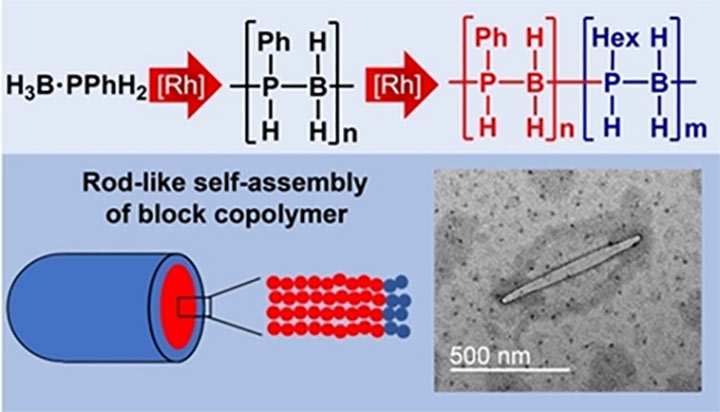New main-group polymers self-assemble into nanostructured materials
Posted on Friday 20 January 2023

Polyphosphinoborane polymers with P–B bonds in their chains based on main-group elements, are chemically-related to technologically ubiquitous carbon-based polymers with C-C bonds (such as polyolefins). As well as being fundamentally interesting as a new class of polymer, polyphosphinoboranes could be used as flame retardants, precursors to high performance ceramics and etch resists in nanolithography.
An important class of polymer are block co-polymers – in which two different types of polymer chain are joined to give a new polymer, which has unique properties. Such polymers often self-assemble in solution to form nano-sized objects which may have many applications in energy research, catalysis, biology and separation science. However, until now, block co-polymers of polyphosphinoboranes could not be made.
Research led by PhD student James Race, who worked within the Weller Research Group in collaboration with Canadian researcher Ian Manners at the University of Victoria has found a solution to this problem. By developing a new rhodium-based catalyst system for the synthesis of polyphosphinoboranes, and performing detailed mechanistic studies into how the catalyst operates, the team were able to design the synthesis of a polyphosphinoborane block co-polymer, which has more hydrophilic phenyl groups at one end and more hydrophobic hexyl groups at the other. By dissolving these polymers in a solvent mixture of THF/hexane the polymers self-assembled to form nanoscale rods or spheres, where the hydrophobic hexyl groups sit on the outside, and the hydrophilic phenyl groups on the inside.
This work therefore opens up new routes to both the synthesis of main group block co-polymers and their application in assembling nanosized objects.
Reflecting on the next steps, Professor Weller said: “This work shows the possible future exciting applications for main-group polymers and nanomaterials made through atom efficient catalytic routes.
"Really pleasingly it was an idea that was initiated by James as a PhD student, and then brought to fruition by his research visit to Ian Manners’ labs in Canada. This shows how collaboration and PhD mobility in projects is so important. ”
James Race is now a PDRA with Martin Albrecht at the University of Bern.
The research was published as Hot Paper in Angew. Chem. Int. Ed.
